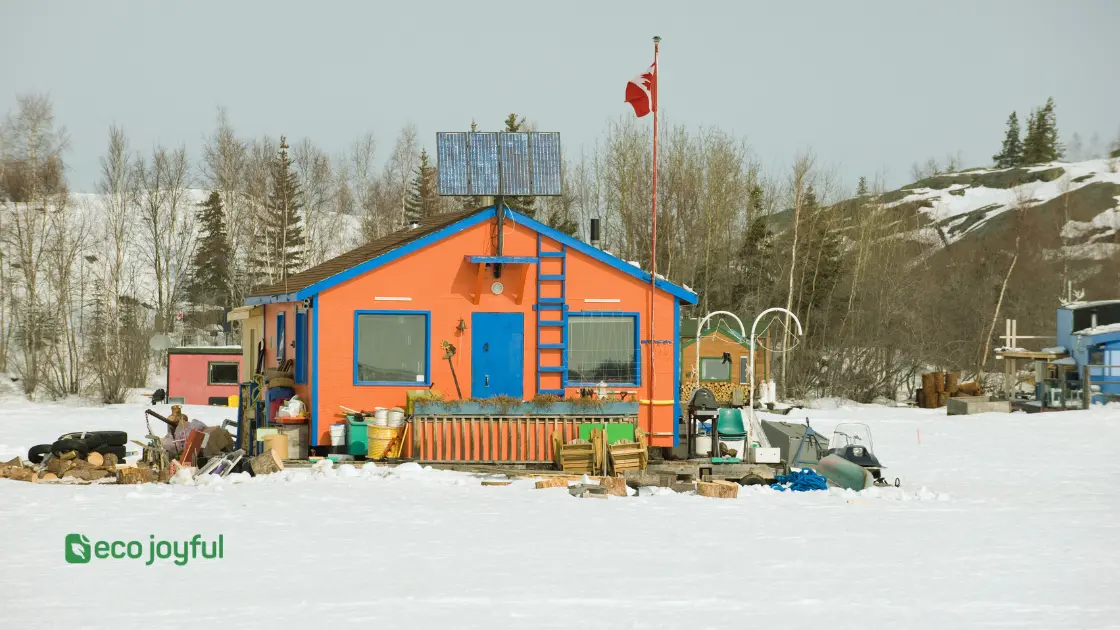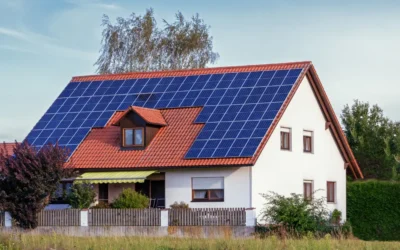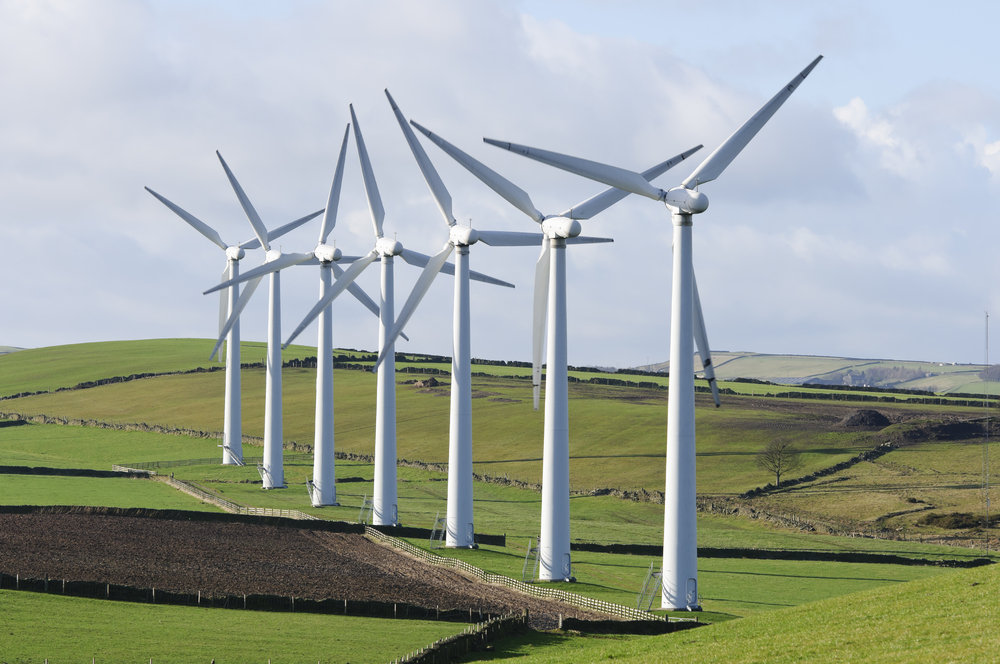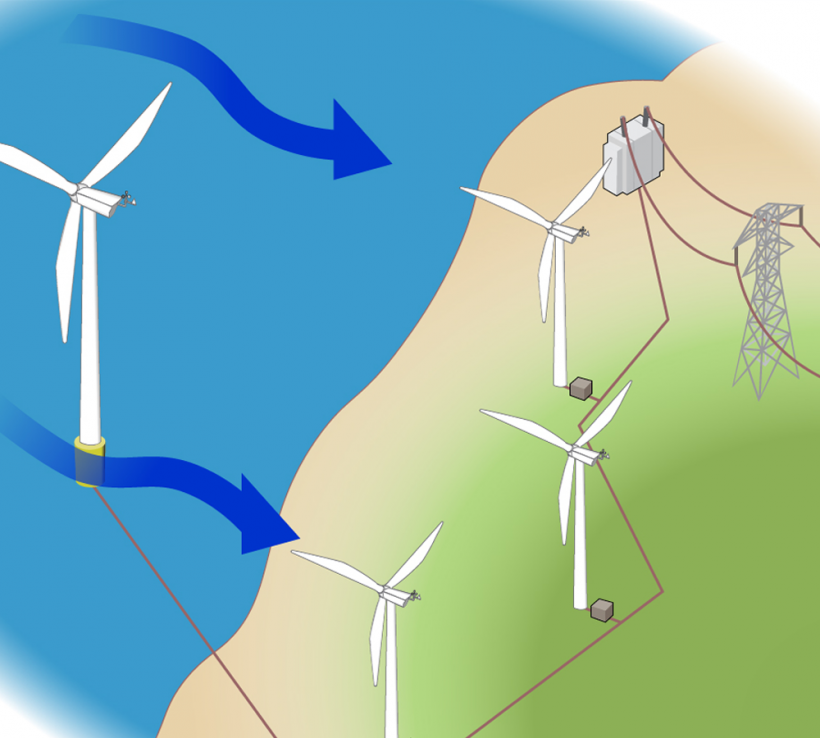Wind energy is good because it is renewable and reduces greenhouse gas emissions. Harnessing the power of the wind to generate electricity has multiple environmental and societal benefits.
Wind energy is a clean and sustainable source of power that doesn’t produce harmful pollutants or contribute to climate change. It helps to reduce dependence on fossil fuels, enhances energy security, and creates jobs in the renewable energy sector. Additionally, wind farms can be set up both on land and offshore, maximizing the potential for energy generation.
With constant advancements in technology and decreasing costs, wind energy is increasingly becoming a crucial part of the global energy mix.
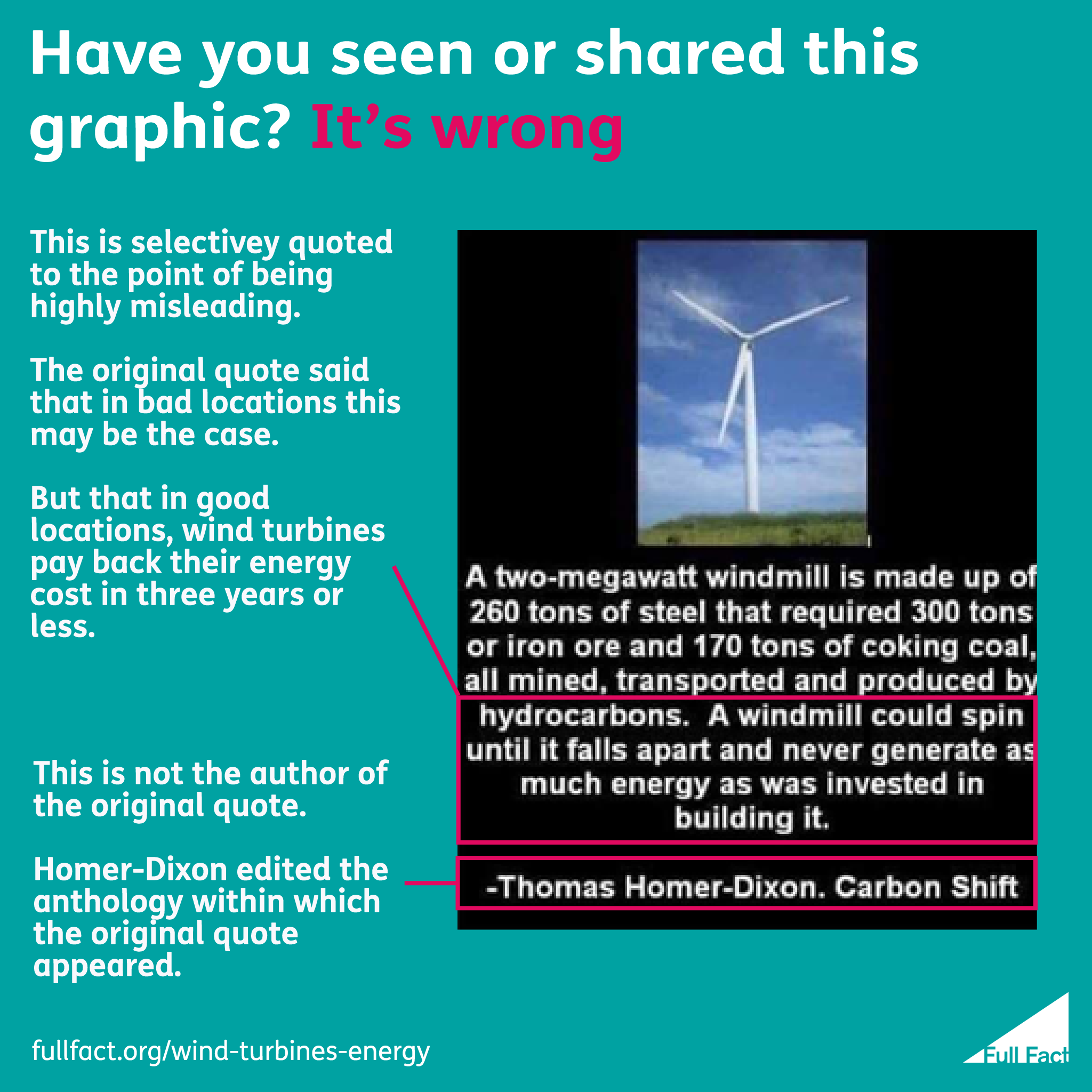
Credit: fullfact.org
1. Clean And Renewable Source Of Energy
Wind energy is a clean and renewable source of power, making it an excellent choice for a sustainable future. Harnessing the power of wind turbines, it offers an eco-friendly alternative to traditional energy sources while reducing greenhouse gas emissions.
Wind energy is a clean and renewable source of electricity that has gained significant popularity in recent years. By harnessing the power of the wind, we can generate electricity without depleting valuable resources or causing harm to the environment.
1.1 Reducing Carbon Emissions
One of the biggest advantages of wind energy is its ability to reduce carbon emissions. Unlike traditional energy sources such as coal or natural gas, wind power produces zero greenhouse gases during operation. As a result, using wind energy for electricity generation significantly reduces our carbon footprint and helps combat climate change.
According to research, a single wind turbine can offset approximately 1,500 tons of carbon dioxide emissions each year. This is equivalent to planting around 1,250 acres of trees or taking 300 cars off the road. By embracing wind energy, we can make substantial progress towards achieving clean and sustainable energy systems.
1.2 Minimizing Environmental Impact
Another key benefit of wind energy is its minimal environmental impact. Unlike fossil fuel power plants, wind farms do not produce harmful pollutants, such as sulfur dioxide or nitric oxide, which can contribute to air pollution and adverse health effects.
In addition, wind turbines have a relatively small physical footprint compared to other forms of power generation. They can be installed on both land and water, making them versatile and adaptable to various locations. Unlike fossil fuel extraction, wind energy does not require extensive mining or drilling, reducing habitat destruction and the risk of spills or accidents.
Furthermore, wind farms can coexist with other land uses, such as agriculture. The land surrounding wind turbines can still be used for farming, grazing, or even recreational purposes. This ensures that we can continue to make the most of our land resources while also harnessing the power of wind for clean electricity generation.
2. Energy Independence And Security
Wind energy plays a crucial role in promoting energy independence and security. By harnessing the power of wind, countries can reduce their reliance on imported fossil fuels and strengthen their energy security. This leads to a more sustainable and stable energy supply, minimizing the impact of geopolitical tensions and price fluctuations in global energy markets.
Diversification Of Energy Sources
Diversifying the sources of energy is essential for reducing vulnerability to supply disruptions and price fluctuations. Wind energy offers a renewable and abundant source of power that complements traditional fuel sources, creating a more resilient and balanced energy portfolio for nations. By integrating wind energy into the mix, countries can mitigate the risk associated with overdependence on a single energy source, ensuring a more secure and sustainable energy future.
Localized Energy Production
Wind farms and turbines can be strategically located in various regions, allowing for localized energy production. This decentralization of power generation reduces the reliance on centralized grids and long-distance transmission, enhancing energy security by creating a more distributed and resilient network. Localized energy production also promotes economic development within communities, as it creates opportunities for job growth and investment in renewable energy infrastructure.
3. Economic Benefits
Wind energy provides significant economic benefits, stimulating job growth and promoting local investment. It offers a sustainable solution to meet energy demands while reducing reliance on fossil fuels. Harnessing the power of wind is not only environmentally friendly but also economically advantageous.
Wind energy not only provides significant environmental advantages but also offers numerous economic benefits. This renewable energy source contributes to job creation and generates revenue for local communities. Let’s explore these economic advantages in greater detail.
3.1 Job Creation
One of the major economic benefits of wind energy is its ability to create jobs. The installation, operation, and maintenance of wind turbines require a skilled workforce, leading to employment opportunities for many individuals. In fact, the wind energy industry has proven to be a reliable job creator, offering stable employment prospects in both rural and urban areas.
In addition to direct employment, wind energy projects also create indirect jobs in manufacturing, transportation, and supply chain sectors. The production of wind turbine components, such as blades and towers, contributes to the growth of local manufacturing industries. The transportation of these components and the construction of wind farms create further job opportunities.
3.2 Revenue Generation For Local Communities
Wind energy projects have the potential to generate significant revenue for local communities. When wind farms are developed on private land, landowners receive lease payments for hosting the turbines. This provides a stable source of income for landowners, often contributing to the viability of agricultural operations and diversifying the local economy.
Beyond land lease payments, wind energy projects also contribute to the tax base of local communities. The tax revenue generated from these projects can be utilized to fund various public services, such as schools, hospitals, and infrastructure development. This not only benefits the local community but also ensures the overall economic growth of the region.
Moreover, wind energy projects can boost tourism in rural areas. Visitors are attracted to the sight of sleek wind turbines gracefully spinning in the wind, providing a unique and environmentally friendly landscape. This influx of tourists can lead to increased spending in local businesses, such as restaurants, accommodations, and retail establishments, further boosting the local economy.
In conclusion, the economic benefits of wind energy are substantial. This renewable energy source creates employment opportunities, stimulates local economies, and generates revenue for communities. By harnessing the power of the wind, we not only protect our environment but also enhance our economic well-being.
4. Abundant And Widely Available
Wind energy is a renewable energy source that is not only abundant, but also widely available. This means that it can be harnessed in various locations around the world, making it a reliable and sustainable option for generating electricity. By utilizing the power of wind, we can tap into a clean and unlimited resource, reducing our reliance on fossil fuels and mitigating the harmful effects of climate change.
4.1 Utilizing Natural Resource
Wind energy is a prime example of harnessing and utilizing a natural resource that is readily available to us. As the wind blows, it carries energy that can be converted into electricity. Unlike non-renewable resources such as coal or oil, wind is a clean and inexhaustible source that will never run out. By channeling the power of the wind through wind turbines, we can generate electricity without depleting natural resources or contributing to harmful emissions.
Wind turbines work by capturing the kinetic energy of the wind and translating it into mechanical power. This power is then converted into electrical energy, which can be used to power homes, businesses, and even entire communities. The versatility and scalability of wind energy make it an ideal solution for meeting our increasing energy demands in a sustainable and environmentally-friendly manner.
4.2 Potential For Offshore Wind Farms
One of the most exciting aspects of wind energy is its potential for offshore wind farms. Unlike onshore wind farms, offshore wind farms are situated in bodies of water, typically in coastal areas or even out at sea. This opens up vast possibilities for generating even more clean energy.
Offshore wind farms have several advantages. First, they can take advantage of stronger and more consistent offshore winds, which are not obstructed by buildings or land features. This means that offshore wind turbines can produce electricity more consistently and efficiently compared to their onshore counterparts.
Second, offshore wind farms have the potential to be located closer to densely populated areas, reducing transmission losses and the need for long-distance electricity transportation. This can help minimize energy security concerns and provide a more reliable electricity supply for coastal communities.
Lastly, offshore wind farms have a smaller visual impact on landscapes compared to onshore wind farms. This makes them more aesthetically pleasing and reduces potential objections from local communities, making it easier to implement these projects and reap the benefits of wind energy.
In conclusion, wind energy is abundant and widely available, making it a valuable asset in our journey towards a sustainable future. By harnessing the power of the wind, we can utilize a natural resource, minimize the harmful effects of climate change, and explore the potential of offshore wind farms for even greater clean energy production.
5. Technological Advancements
Technological advancements in wind energy have significantly improved the efficiency and cost-effectiveness of harnessing wind power. Innovations in wind turbine design have led to greater energy production and reduced environmental impact.
5.1 Improving Efficiency And Cost-effectiveness
The advancements in wind energy technology have led to improved efficiency and cost-effectiveness. New developments in rotor blade design, materials, and controls have increased the overall efficiency of wind turbines. This has resulted in higher energy output and reduced operational costs, making wind energy a more competitive option in the renewable energy sector.
5.2 Innovation In Wind Turbine Design
Innovation in wind turbine design has played a pivotal role in the growth of wind energy. Advancements in aerodynamics, structural engineering, and smart technologies have led to the development of more efficient and durable wind turbines.
Cutting-edge designs such as vertical axis and offshore wind turbines are expanding the possibilities for wind energy generation, tapping into previously untapped wind resources and opening up new potential for sustainable energy production.
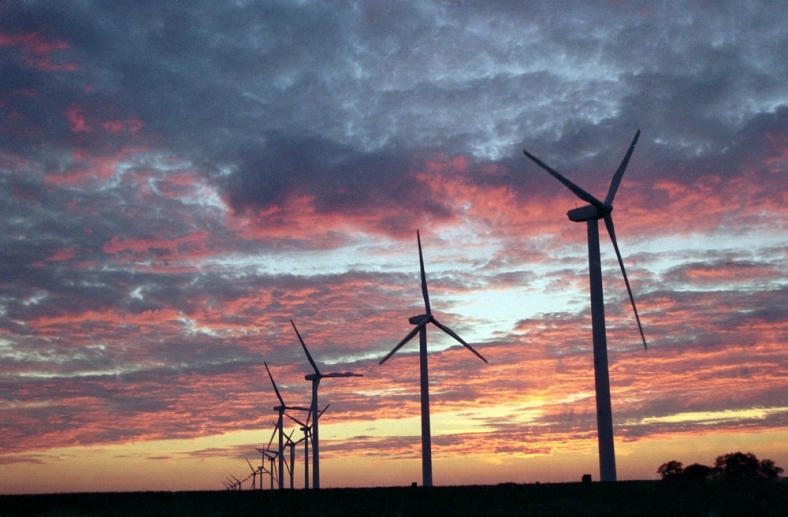
Credit: www.energy.gov
Conclusion
Wind energy offers a sustainable and clean solution to our energy needs. Its benefits, such as reducing carbon emissions and creating local jobs, make it a viable option for a greener future. As technology advances, the potential for wind energy to power more homes and businesses continues to grow, further solidifying its importance in our efforts to combat climate change.



